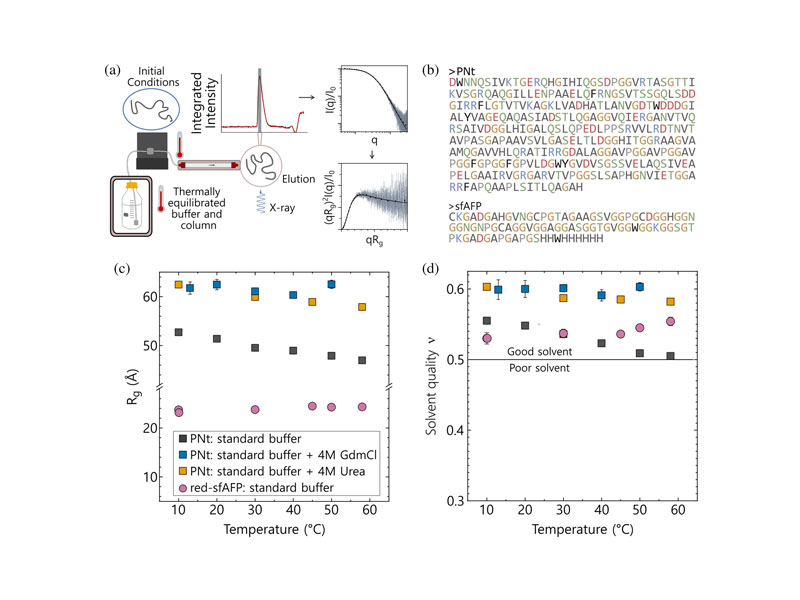
How hydrophobicity, side chains, and salt affect the dimensions of disordered proteins

How hydrophobicity, side chains, and salt affect the dimensions of disordered proteins
Michael C. Baxa, Xiaoxuan Lin, Cedrick D. Mukinay, Srinivas Chakravarthy, Joseph R. Sachleben, Sarah Antilla, Nina Hartrampf, Joshua A. Riback, Isabelle A. Gagnon, Bradley L. Pentelute, Patricia L. Clark, Tobin R. Sosnick
Abstract
Despite the generally accepted role of the hydrophobic effect as the driving force for folding, many intrinsically disordered proteins (IDPs), including those with hydrophobic content typical of foldable proteins, behave nearly as self-avoiding random walks (SARWs) under physiological conditions. Here, we tested how temperature and ionic conditions influence the dimensions of the N-terminal domain of pertactin (PNt), an IDP with an amino acid composition typical of folded proteins. While PNt contracts somewhat with temperature, it nevertheless remains expanded over 10–58°C, with a Flory exponent, ν, >0.50. Both low and high ionic strength also produce contraction in PNt, but this contraction is mitigated by reducing charge segregation. With 46% glycine and low hydrophobicity, the reduced form of snow flea anti-freeze protein (red-sfAFP) is unaffected by temperature and ionic strength and persists as a near-SARW, ν ~ 0.54, arguing that the thermal contraction of PNt is due to stronger interactions between hydrophobic side chains. Additionally, red-sfAFP is a proxy for the polypeptide backbone, which has been thought to collapse in water. Increasing the glycine segregation in red-sfAFP had minimal effect on ν. Water remained a good solvent even with 21 consecutive glycine residues (ν > 0.5), and red-sfAFP variants lacked stable backbone hydrogen bonds according to hydrogen exchange. Similarly, changing glycine segregation has little impact on ν in other glycine-rich proteins. These findings underscore the generality that many disordered states can be expanded and unstructured, and that the hydrophobic effect alone is insufficient to drive significant chain collapse for typical protein sequences.



